Rumble Pie #20
Another Twig in the Wall
IS THERE SUCH A THING as objective beauty? Can beauty be quantified as well as qualified? I'm not speaking here about human beauty, or which people we are more attracted to. Naomi Wolf tackled that topic back in 1991, demonstrating that a single impossible standard of beauty is promulgated by advertising agencies to make us feel inadequate enough to purchase the products they're huckstering. But although beauty is in the eye of the multi-cultural beholder, science says that there are some measurements that are universally held to be desirable, across cultures. Could the same thing be true for the rest of creation? Is there a secret mathematical formula for the perfect landscape?
A FEW YEARS AGO, I made an unexpected discovery about digital imaging. When using the graphic design industry-standard application Adobe Photoshop to colour-correct a few photographs, I noticed something strange about the "levels" tool. Without getting too technical, the levels tool produces a histogram of all of the pixels in a picture, so you can analyze the color balance and adjust it accordingly. When viewing the levels on an average image, the results can be wavy, jagged, even wildly erratic. But on a snapshot of natural scenery, it produces a perfect bell-curve! It's as if the entire ecosystem is in harmonious balance, not only in terms of the food chain of interdependent species, but also in terms of the light spectrum -- which, ultimately, can be measured in energy wavelengths.

HERE BELOW ARE A COUPLE of great examples of the phenomenon I'm talking about. The first is an image of the Grand Canyon, in Arizona. The mountains are multi-coloured and craggy, not uniform in shape or in shading. But the histogram that they produce is nearly perfect (the ramp up at the end corresponds to the white cumulus clouds). The second picture was taken much closer to home, in Algonquin National Park, a two-hour drive north of Toronto. Here, at much closer range, in addition to the seemingly static landscape there is a moose making her way across the meadow. Incredibly, the same rule seems to be in effect, the natural hues of the moose blend right in spectragraphically, only slightly skewing the curve.


CONTRAST THESE WITH THE FOLLOWING three images of downtown Toronto, from different distances. In the first photograph, a satellite image, there are several unsightly protrusions coming out of the bell curve. The pictures get progressively worse. In the second picture, a bird's-eye view of the downtown core, the curve is more deformed and includes irrational peaks and troughs. Finally, in the third image, a close-up shot of a luxury condominium, what real estate developers would have you believe is exemplary modern architecture -- the curve has completely lost it's bell, it's now composed of all kinds of observable information that contrasts and clashes with itself.
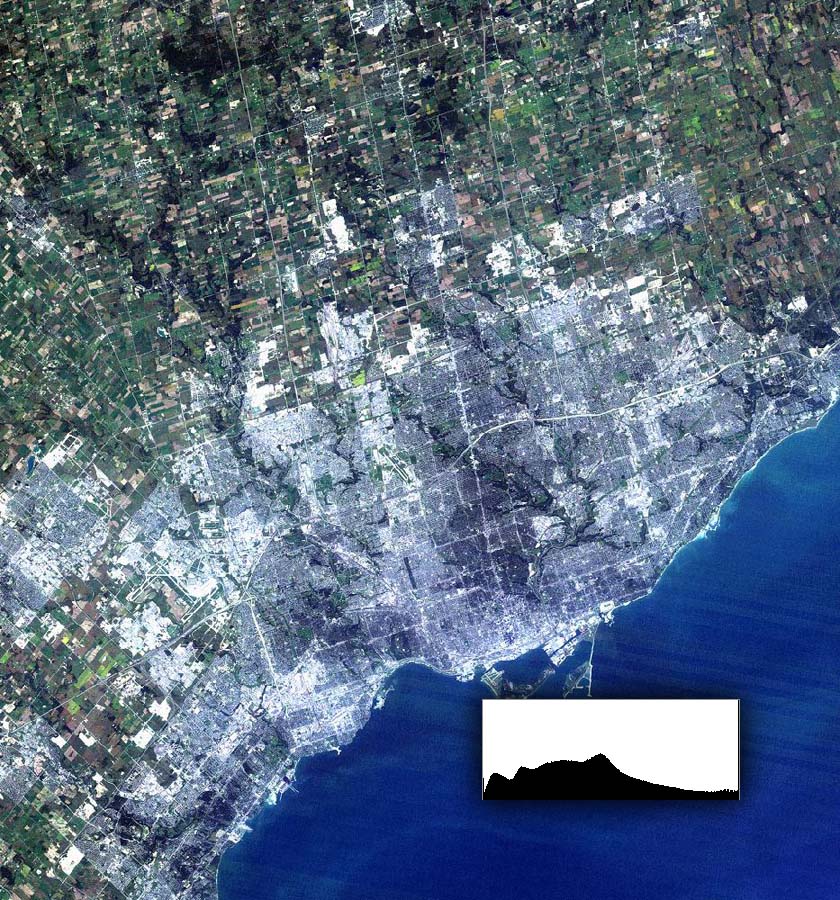
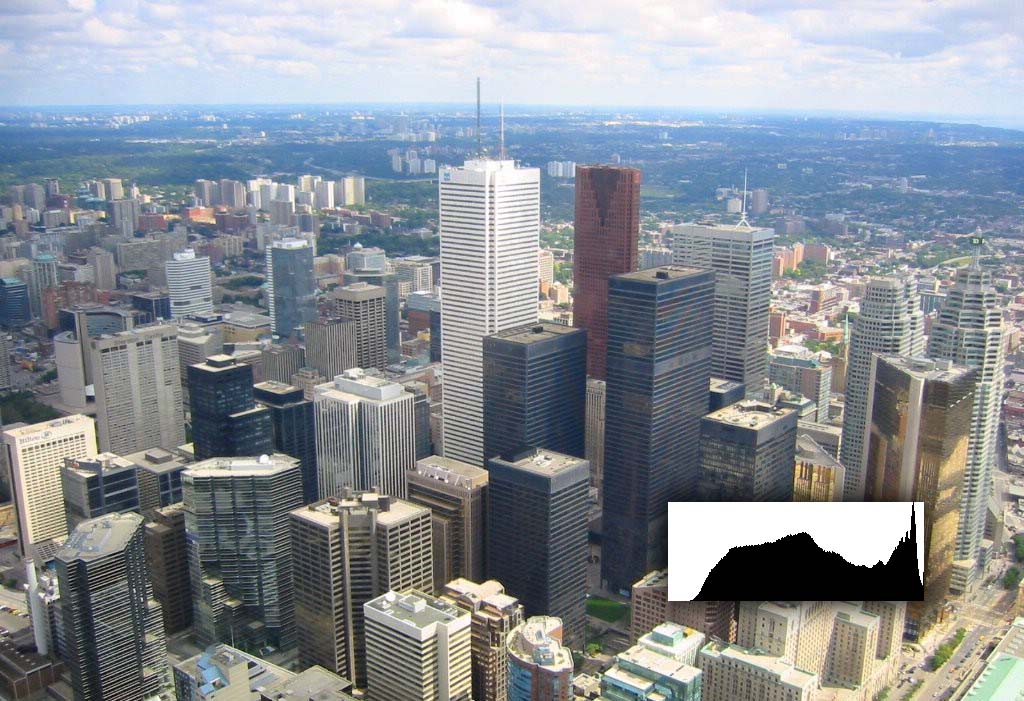
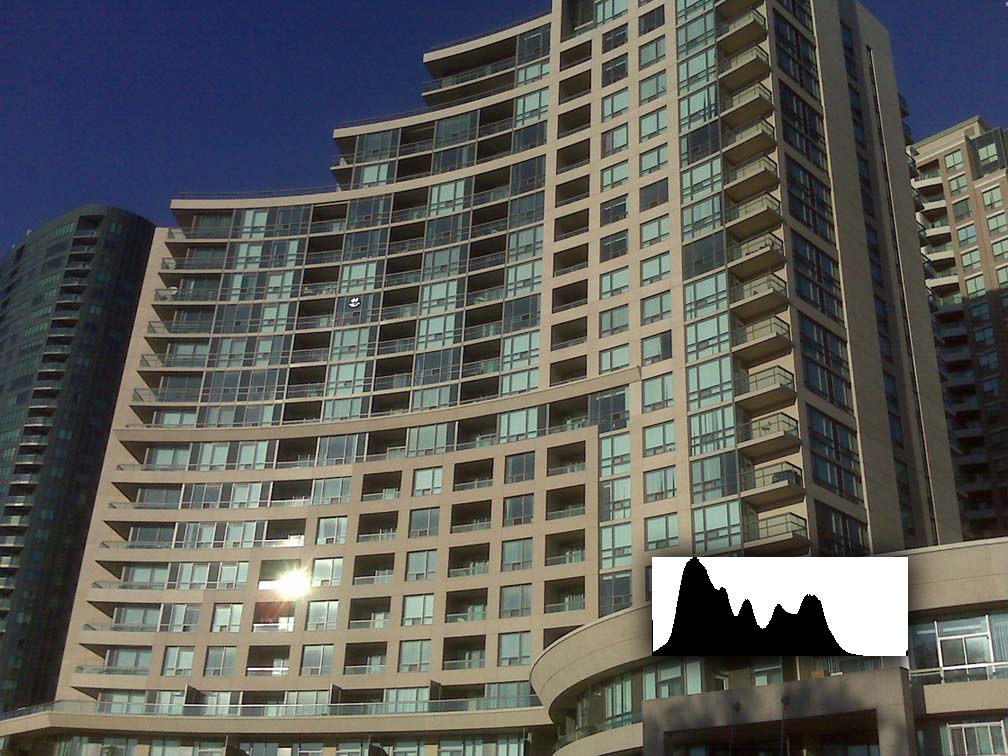
SO IS IT POSSIBLE for humans to manufacture landscapes that are as beautiful as anything nature can create on her own? An earlier attempt to produce visual perfection is the pastoral landscape painting, as we discussed in an earlier blog entry, Clover the Hills and Far Away. In this rendering of an English Garden below, Rococo atmospheric master Hubert Robert manages to nearly capture nature with subdued hues that closely approach the slightly undulating bell curve. Nice, but what about real life, real environments?
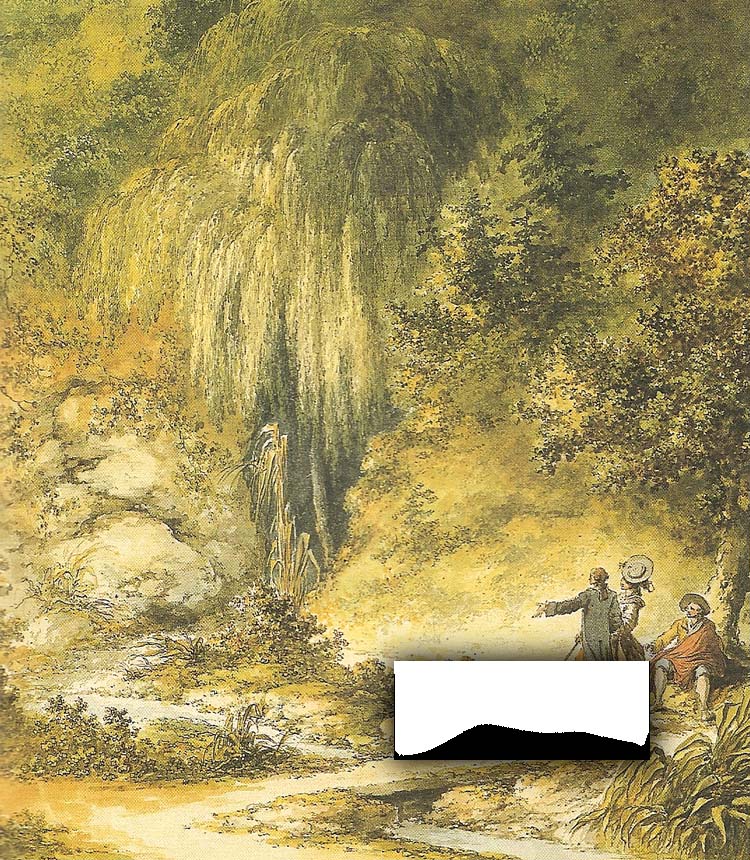
IN 2006, PETER AND I traveled to England to learn about and document local natural building techniques -- a topic for a future blog entry, to be sure. But while we were there in the county of Devon visiting natural building practitioners, I came upon these ruins of an old out-building that had been exposed to the elements for who-knows-how-long. I was struck by its incredible beauty, and recorded its image for my personal scrapbook. When I later developed the film, I was struck by the almost-perfect bell curve that resulted! So it would seem that when nature is left to her own devices, she reclaims human-made structures and they discernibly revert to their former glory.
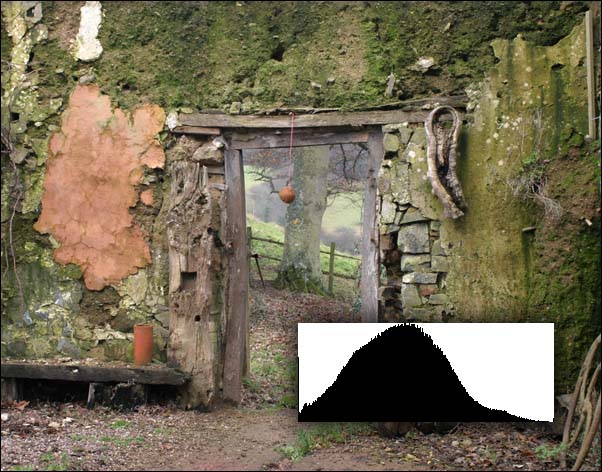
BUT THE QUESTION REMAINS: can we as professional landscapers ever hope to approach the same sublime beauty that comes naturally to nature? I don't think we can ever really reach that pinnacle, but we're willing to give it our best shot. Going through the Green Apple portfolio of former clients, I think that our work stands up pretty well under these criteria. Here below is a shot of Peter's own backyard waterfall pond. Notice that even though there are many diverse elements that make up the scene (including a little statue of Yoda from Star Wars -- nice one, Pete!), the image as a whole is distilled into a single smooth curvy arc. Truly, beautiful!
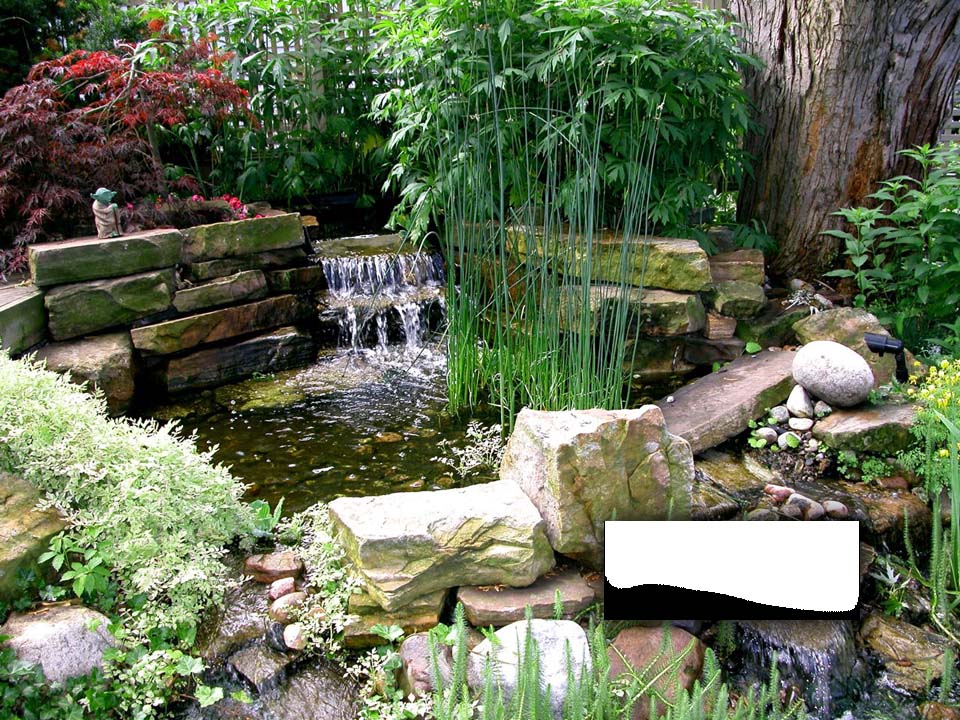
|

